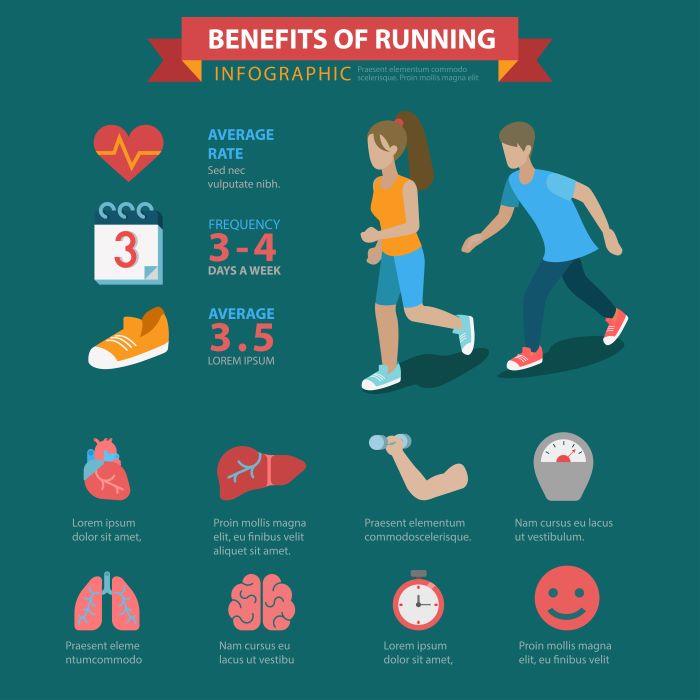Embarking on a running journey can be both exhilarating and daunting, especially when preparing for a half marathon. Our 16-week running program for half marathon success is designed to guide you through each step of the process. Whether you are a seasoned runner or a beginner, this comprehensive program offers a structured approach to training that accommodates all fitness levels.
Throughout these 16 weeks, you will engage in a variety of tailored workouts that focus on building your endurance, speed, and overall running efficiency. The program intricately blends long runs, speed workouts, and recovery days to ensure that you develop the stamina necessary to cross that finish line with confidence.
Moreover, being part of our vibrant running community means you will have access to expert tips, motivational resources, and a network of fellow runners who share your goals. This camaraderie can make all the difference, especially when the miles get tough. With guidance from experienced coaches and the support of peers, your journey towards half marathon success will be not only achievable but also enjoyable.
Visit our website to learn more and get started today! Click here.
Benefits of Following a Structured Running Program

Adopting a structured running program offers numerous benefits that can significantly enhance your training experience and performance. By following a well-designed plan, you not only streamline your workouts but also maximize your potential as a runner. Here are some of the standout advantages:
- Consistency: A structured program encourages regular training, which is crucial for building endurance and improving speed. By adhering to a set schedule, you create a routine that helps you stay committed to your goals.
- Progress Tracking: Structured programs typically include measurable milestones and performance assessments, allowing you to monitor your progress over time. This feedback can boost your motivation and highlight areas for improvement.
- Injury Prevention: With a balanced approach that incorporates rest days and varied workouts, structured training reduces the risk of overuse injuries. This is essential for maintaining your health and ensuring you can continue running.
- Goal-Oriented Training: A well-constructed program is designed with specific objectives in mind, such as preparing for a half marathon. This focus helps keep your training aligned with your goals, making each workout purposeful and effective.
- Expert Guidance: Many structured programs, like our 16-week half marathon training plan, are developed by experienced coaches who understand the nuances of training. Their insights can provide you with valuable strategies and tips that enhance your performance.
By embracing a structured running program, you set yourself up for success, making the journey toward your running goals more effective and enjoyable.
Key Components of a Successful Half Marathon Plan

Creating a successful half marathon training plan involves several key components that ensure you are well-prepared both physically and mentally for race day. Understanding these elements can help you tailor your training and achieve your running goals with confidence. Here are the essential components to consider:
- Base Mileage: Establishing a solid base mileage is crucial for building endurance. Typically, your weekly mileage should gradually increase over time, allowing your body to adapt to longer distances without risking injury.
- Long Runs: Incorporating weekly long runs is vital for developing the stamina needed for a half marathon. These runs, usually scheduled on weekends, should progressively increase in distance to simulate race conditions and prepare your body for the challenge ahead.
- Speed Work: To improve your overall pace, include speed workouts such as intervals, tempo runs, or hill repeats. These high-intensity sessions help enhance your cardiovascular fitness and running efficiency.
- Rest and Recovery: Adequate rest is essential for allowing your muscles to recover and rebuild. A successful plan will integrate rest days and lower-intensity workouts, which are critical for preventing burnout and injuries.
- Nutritional Guidance: Proper nutrition plays a significant role in your training success. A solid plan should offer advice on fueling your body effectively before, during, and after runs to optimize performance and recovery.
- Race Simulation: Incorporating race simulation runs into your training prepares you mentally and physically for the actual event. This practice allows you to familiarize yourself with pacing strategies and nutrition plans, ensuring you feel confident on race day.
By understanding and implementing these key components, you can create a well-rounded half marathon training plan that sets you on the path to success.
Weekly Breakdown of the 16-Week Running Schedule
Understanding the weekly structure of a 16-week running program is crucial for achieving your half marathon goals. This breakdown provides a clear roadmap that balances mileage, intensity, and recovery, ensuring that you build endurance while minimizing the risk of injury. Below is a typical weekly outline that can be adapted based on your fitness level:
- Weeks 1-4: Building Base Mileage
- Monday: Rest or cross-training (e.g., cycling, swimming)
- Tuesday: Short, easy run (3-4 miles)
- Wednesday: Speed work (interval training or hill repeats)
- Thursday: Easy run (3-5 miles)
- Friday: Rest
- Saturday: Long run (start with 5-6 miles, increasing weekly)
- Sunday: Active recovery (yoga or light stretching)
- Weeks 5-8: Increasing Intensity
- Monday: Rest or cross-training
- Tuesday: Moderate run (4-5 miles)
- Wednesday: Tempo run (5-6 miles at a faster pace)
- Thursday: Easy run (4-6 miles)
- Friday: Rest
- Saturday: Long run (increase up to 8-10 miles)
- Sunday: Active recovery
- Weeks 9-12: Peak Training
- Monday: Rest or cross-training
- Tuesday: Moderate run (5-6 miles)
- Wednesday: Speed work (faster intervals or tempo runs)
- Thursday: Easy run (5-7 miles)
- Friday: Rest
- Saturday: Long run (peak at 10-12 miles)
- Sunday: Active recovery
- Weeks 13-16: Tapering
- Monday: Rest or light cross-training
- Tuesday: Shorter moderate run (4-5 miles)
- Wednesday: Short speed work (reduce intensity)
- Thursday: Easy run (3-5 miles)
- Friday: Rest
- Saturday: Long runs that taper to 8-10 miles
- Sunday: Active recovery
This structured approach ensures that you progressively increase your training load while allowing your body adequate time to recover. Adjust the mileage and intensity based on your fitness level, and remember to listen to your body throughout the training process.
Nutrition and Recovery Strategies for Runners

Embarking on a 16-week running program requires more than just a commitment to training; it also demands a focus on nutrition and recovery. Proper fueling and recovery strategies are essential to maximize performance, enhance endurance, and minimize injury risk.
Nutrition plays a pivotal role in your running success. Here are key aspects to consider:
- Carbohydrates: As a primary energy source, carbohydrates should make up about 60-70% of your diet. Incorporate whole grains, fruits, and vegetables to provide sustained energy for your runs.
- Proteins: Essential for muscle repair and recovery, aim for 1.2 to 2.0 grams of protein per kilogram of body weight. Sources include lean meats, fish, dairy, legumes, and nuts.
- Fats: Healthy fats, such as those found in avocados, nuts, and olive oil, are crucial for overall health and energy.
In addition to fueling your body, implementing effective recovery strategies is vital:
- Hydration: Staying hydrated ensures optimal performance and recovery. Aim to drink water throughout the day and consume electrolyte-rich fluids post-run.
- Rest: Adequate rest days and sleep are paramount for muscle recovery and performance enhancement. Aim for 7-9 hours of quality sleep each night.
- Stretching and Foam Rolling: Incorporate dynamic stretches before your runs and static stretching post-run. Foam rolling can help alleviate muscle soreness and improve flexibility.
Lastly, consider consulting with a sports nutritionist for personalized guidance. By prioritizing both nutrition and recovery, you’ll set yourself up for success throughout your half marathon training journey.
Tips for Race Day Success and Beyond

As you approach the culmination of your 16-week running program, having a solid plan for race day can make all the difference in your performance. Here are some essential tips to ensure your race day is a resounding success:
- Pre-Race Preparation: A well-planned lead-up to the race is crucial. Familiarize yourself with the course, plan your travel to the event, and ensure you have all your gear ready the night before.
- Nutrition Strategy: On race day, consume a light breakfast that you’ve tested during your training. Stick to familiar foods to avoid any gastrointestinal issues.
- Warm-Up: Engage in a proper warm-up routine to prepare your muscles for the race. This can include light jogging and dynamic stretches to get your heart rate up and muscles ready.
- Pace Yourself: Start at a comfortable pace to avoid burnout. Use your training runs to gauge your pace and stick to it throughout the race.
- Stay Hydrated: Make use of water stations along the course, and bring your own hydration if necessary. Staying hydrated is key to maintaining energy levels.
Beyond race day, consider the following for continued success:
- Post-Race Recovery: Allow your body time to recover after the race. This includes rest, rehydration, and gentle stretching to alleviate any soreness.
- Reflect on Your Experience: Take notes on what worked and what didn’t. Understanding your experience can help you improve for future races.
- Join the Community: Engage with fellow runners through local clubs or online communities. This support network can keep you motivated and accountable in your running journey.
By implementing these tips, you’ll not only enhance your race day success but also create a sustainable running routine that lasts well beyond the finish line. Visit our website to learn more and get started today! Click here.


